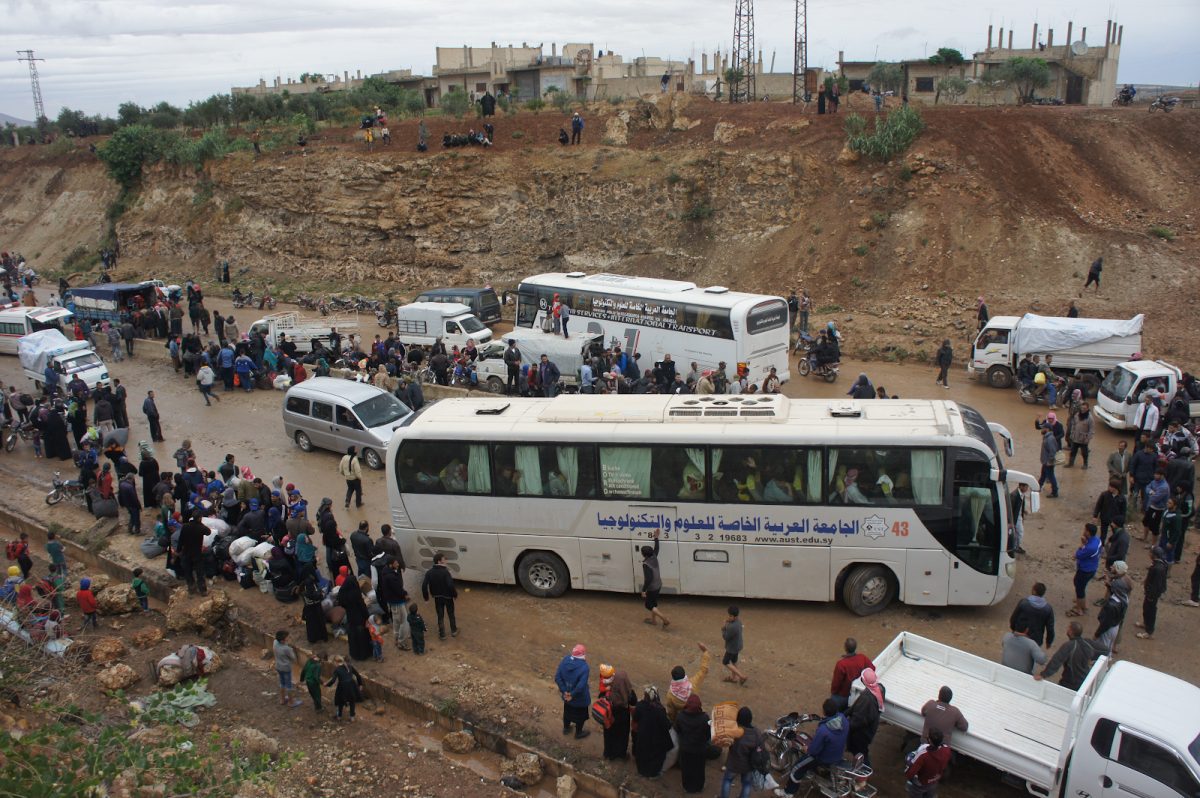Rebel forces and civilians begin evacuating besieged Homs countryside: ‘We don’t want another Ghouta’
AMMAN: Dozens of buses carrying rebel fighters and civilians departed […]
7 May 2018
AMMAN: Dozens of buses carrying rebel fighters and civilians departed the besieged, rebel-held northern Homs countryside on Monday morning, local sources told Syria Direct, in the latest Russian-brokered evacuation deal between opposition and government forces.
As many as 2,900 fighters and civilians were expected to leave the besieged pocket on Monday, a rebel negotiator told Syria Direct, in the first round of evacuations set to clear the last opposition forces from Homs province.
The evacuation deal, reached by Syrian government, Russian and opposition negotiators last Wednesday, followed a weeks-long air and ground campaign that saw rebel frontlines battered by airstrikes and artillery, Syria Direct reported at the time.
However, the northern Homs countryside was largely spared the massive government onslaughts seen in places such as East Ghouta and Aleppo that killed and injured thousands of civilians before rebel factions agreed to surrender.

“It was possible to resist longer, as Ghouta did,” Abdelkarim Qasioun, an opposition negotiator who helped set the terms of the agreement, told Syria Direct on Monday. “But it would have ended the same: with displacement.”
Facing pressure from civilians to surrender and threatened by the prospect of a renewed pro-government bombing campaign, rebels agreed to lay down their heavy weapons and surrender relatively quickly. Doing so saved rebels and civilians alike from “months of killing and destruction,” Qasioun said.
Evacuations were originally set to begin on Saturday, the negotiator added, but were delayed until rebels surrendered all of their heavy weapons and local authorities registered the names of evacuees.
The final number of residents departing northern Homs, as well as how many days are required to finish the population transfer, remain unclear, Qasioun told Syria Direct. However, the number of evacuees “could reach 50,000,” he added.
Fighters and civilians wishing to leave north Homs have a choice between evacuation to Idlib province, a rebel stronghold largely controlled by hardline Islamist rebels, or to the northern Aleppo city of Jarablus, currently held by pro-Turkish opposition factions.
For those northern Homs residents who wish to remain in their homes—a majority of the region’s estimated population of 240,000—the Syrian government will grant them six months to surrender their arms reconcile their status with the state, Qasioun told Syria Direct.
“It’s a tragedy in every sense of the word,” Bassam al-Homsi, a 25-year-old resident of al-Houla in the northern Homs countryside, told Syria Direct on Monday. “Nobody has the desire to fight anymore.”
Evacuees arrive by truck and motorcycle to a-Rastan on Monday. Photo courtesy of Amer al-Nasser.
Al-Homsi plans to leave Homs with his family in an upcoming round of evacuations, but lives some 25 kilometers west of the city of a-Rastan, the only departure point for government buses, he said.
“People want to take their belongings, but this requires an [expensive] car ride,” al-Homsi told Syria Direct. “We’ll have to go in a group and divide the amount amongst ourselves.”
The northern Homs countryside, a collection of cities, towns, villages and rural areas north of the provincial capital, was captured by rebel factions in 2012. Over the following two years, pro-government forces gradually encircled the area and imposed a tight siege, sporadically targeting the pocket with airstrikes and artillery.
“The balance of power on the ground is not equal,” Talal al-Mansour, a rebel commander with the Failaq a-Rabaa faction, told Syria Direct on Monday.
“It’s true that we could have resisted longer,” al-Mansour said, but “we don’t want another East Ghouta.”







